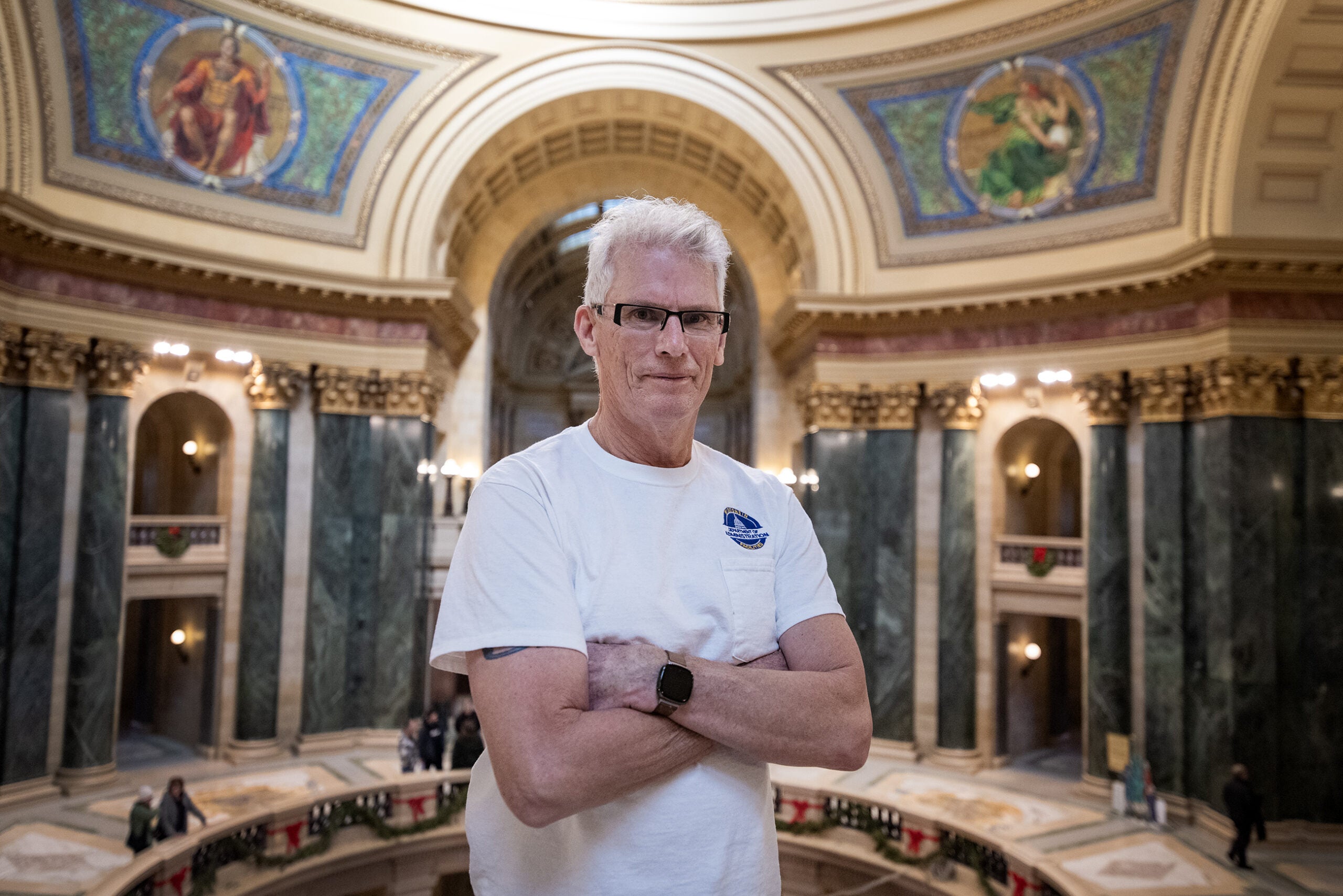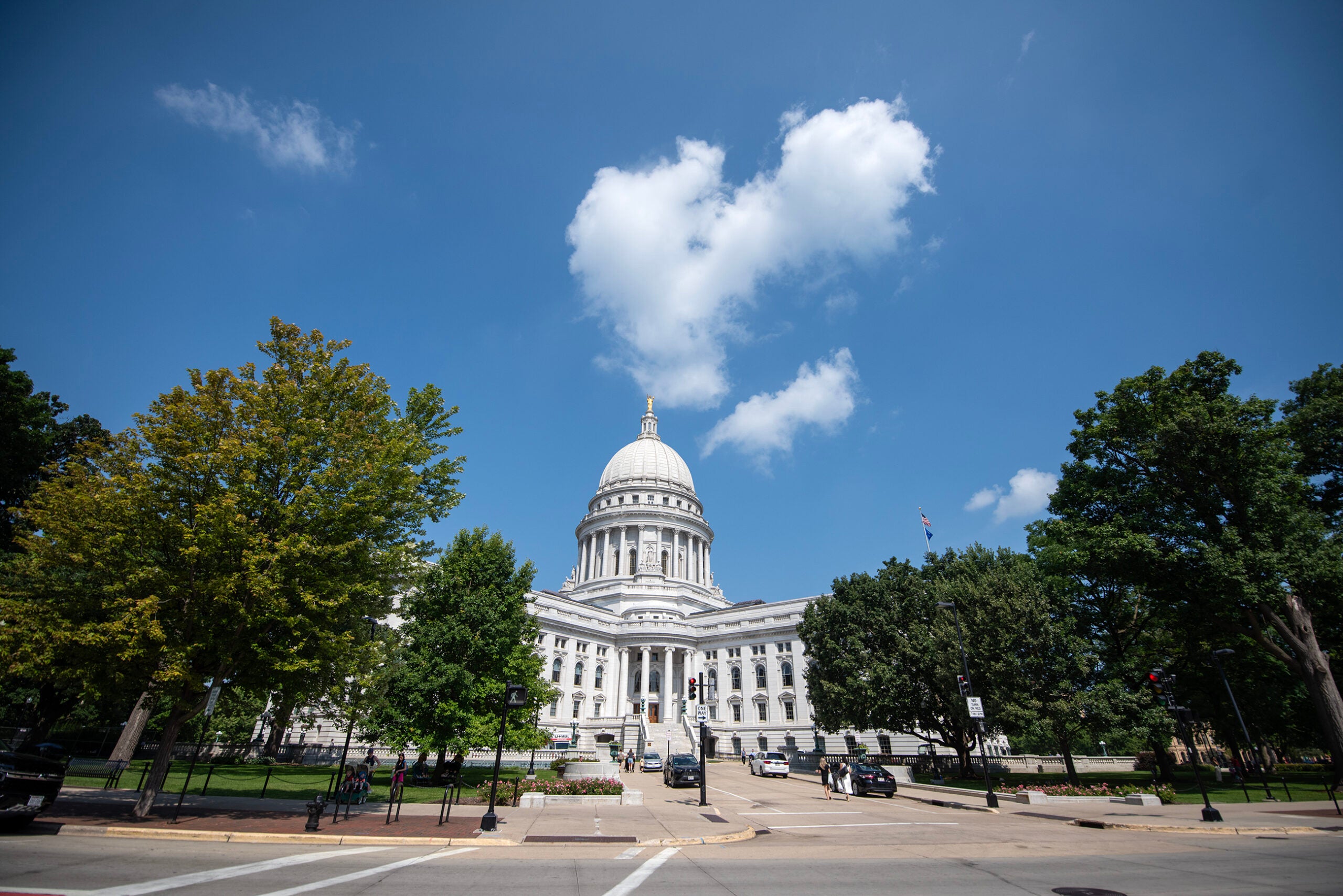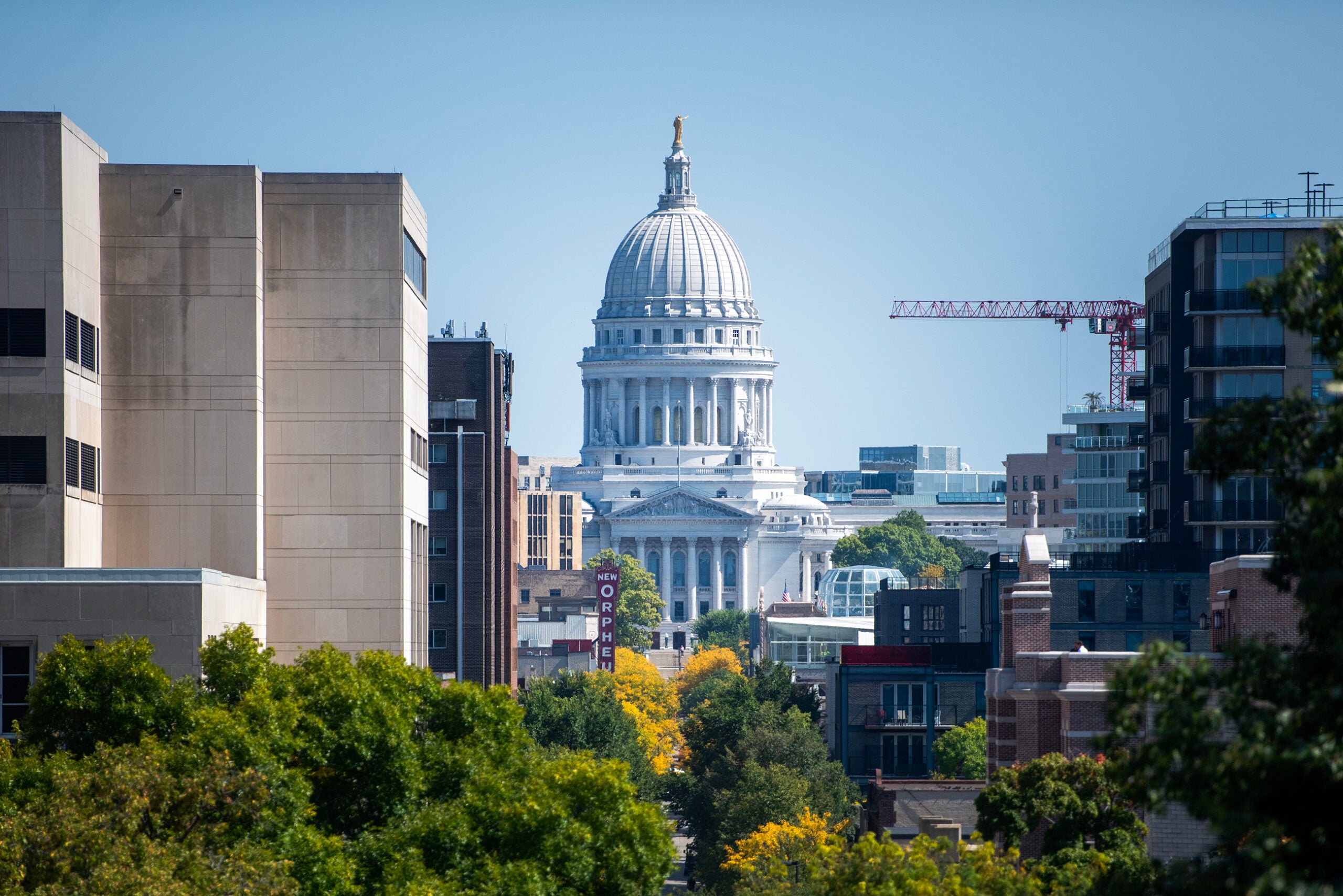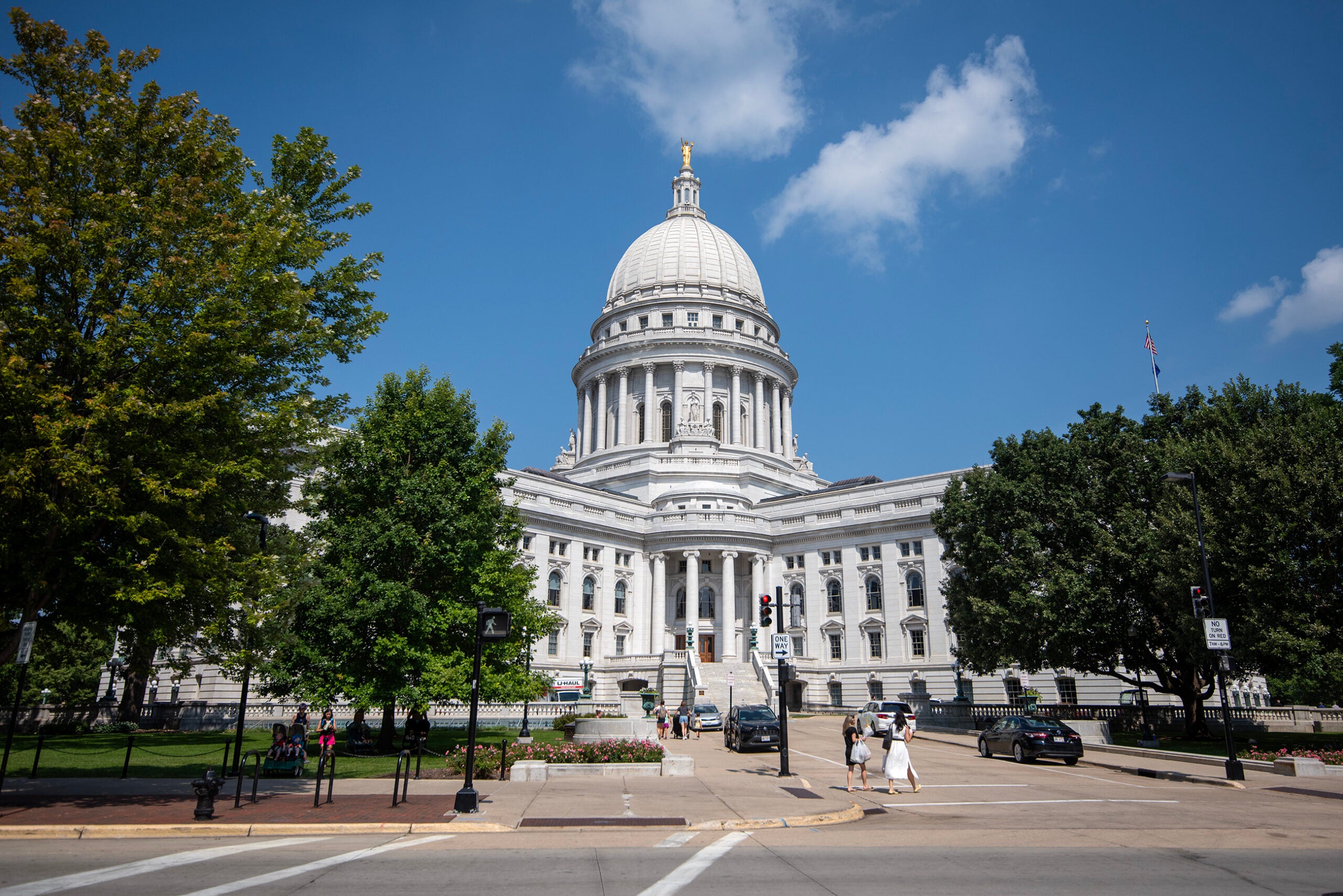The Wisconsin State Capitol gives a lot of first impressions.
Drivers approaching Madison’s downtown along Lake Monona spot the building on their way into the city. Dane County Farmers Market attendees round the Capitol square on spring, summer and fall days. Elementary school students from across the state take field trips to tour where legislators craft the state’s laws.
Jeff LaMay cares a lot about those first impressions. He is the Capitol’s decorative painter — the guy responsible for maintaining the Capitol’s interior and exterior painted surfaces. He maintains the “Forward” and “Heg” statues outside the Capitol as well as the one that sits on top of the building.
News with a little more humanity
WPR’s “Wisconsin Today” newsletter keeps you connected to the state you love without feeling overwhelmed. No paywall. No agenda. No corporate filter.
LaMay touches up wear and tear on doors and any of the hundreds of cherry wood windows. He fixes chips in nooks and crannies. He wants the building to look pristine and match as much as possible what the Capitol’s original builders created.
“If they were still here from 1917, (they) would recognize what they see,” he said.
LaMay recently joined WPR’s “The Morning Show” to discuss the never-ending work of maintaining the building designated as a National Historic Landmark. He said he enjoys keeping the Capitol up to a very high standard.
But it’s a challenging, tedious job. The doors, windows, walls and ceilings must be in near perfect condition. Virtually no scratch is too small to worry about. Attention to detail is a hallmark quality in LaMay’s position.
He said thinking on his feet and being patient are key attributes that can make someone successful in this role.
“The Capitol throws all different problems up, and you have to work your way through them,” he said. “You don’t want to ruin anything that is 100 years old or older. Some of it, you have to be careful because you can just touch something (and) it will fall. You want to save it, so you have to really take it easy.”
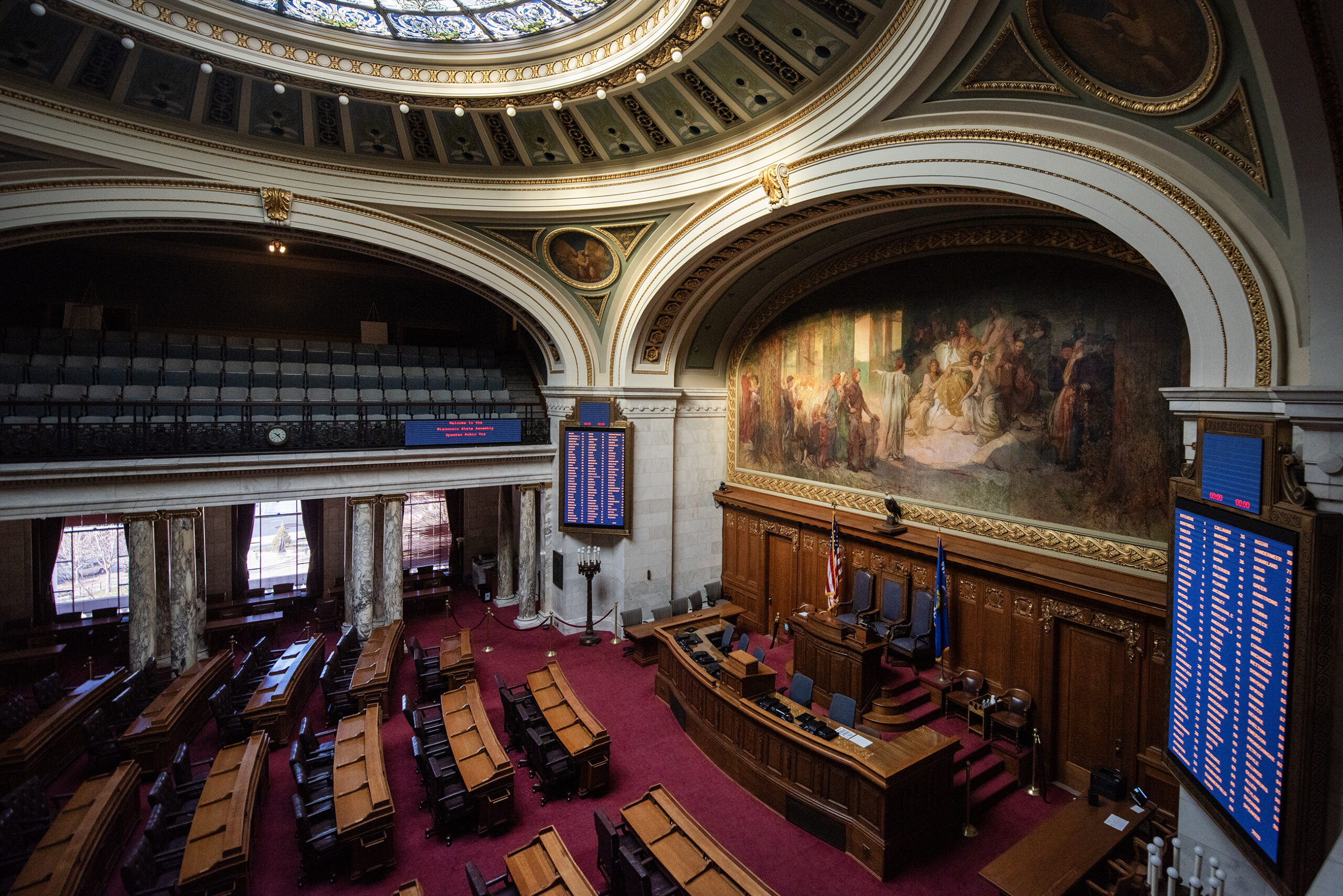
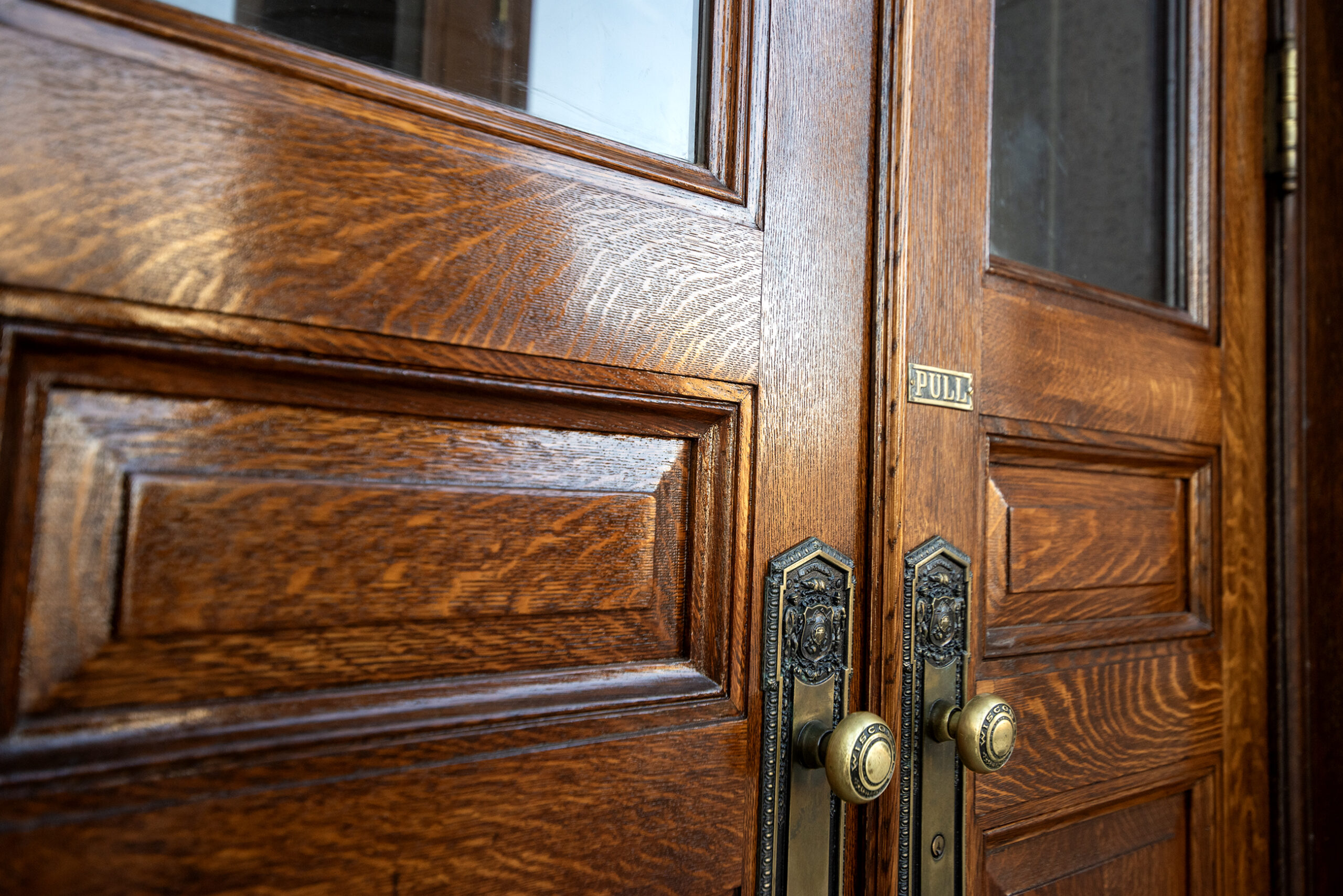
In the north wing of the Capitol, the Grand Army of the Republic Memorial Hearing Room features patriotic and Civil War motifs. The room was important at the building’s inception, LaMay said, as it honored Civil War veterans, some of whom were still alive at the time.
To be good at this job, LaMay said you need to be good with color. As part of a test for the job around 2007, LaMay had to touch up paint in 16 rooms. He soon learned there were 600 colors at the Capitol, and palette-matching is an important skill.
LaMay has keys to pretty much anywhere in the Capitol. He knows the microclimates of spaces throughout the building. Some spaces hold more moisture than others, he said. Stone and marble might respond differently to temperature changes.
For example, LaMay said the doors on the south and west sides of the building need a maintenance coat about every two years. The sun beats on those doors and wears them down.
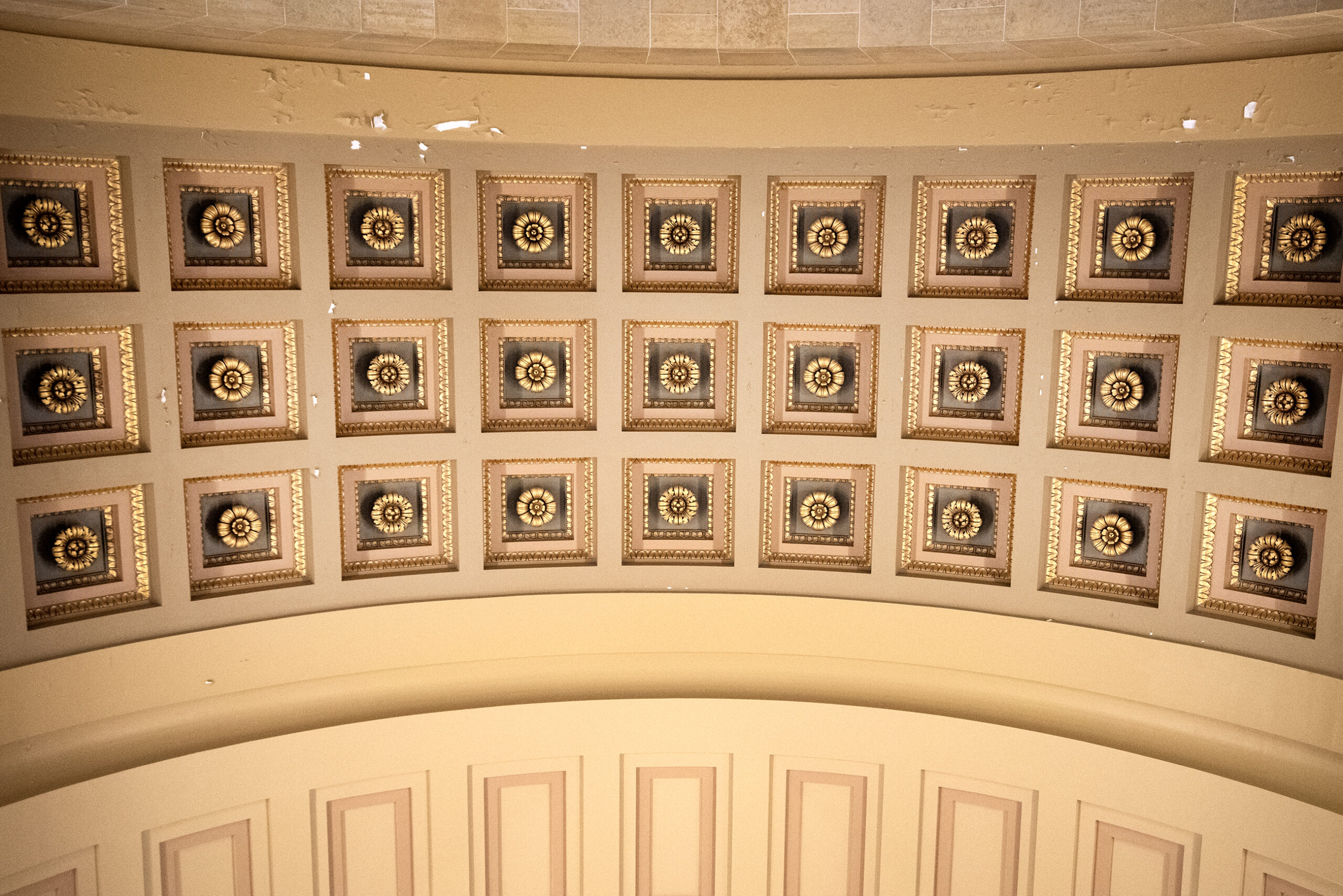
LaMay recently refinished the Capitol’s exterior doors. Last spring, he did the same to all 524 windows on the first four floors of the Capitol. That work started in summer 2022.
“When it’s 90-something degrees, doing windows, it gets a little taxing out there,” he said.
LaMay takes great pride in the compliments about the Capitol’s beauty whether from visitors, legislators or other maintenance workers. But LaMay especially loves to see kids show their amazement.
“It really hits home what a special building this is and why it’s so important to maintain it to a high level,” he said. “I love my job.”
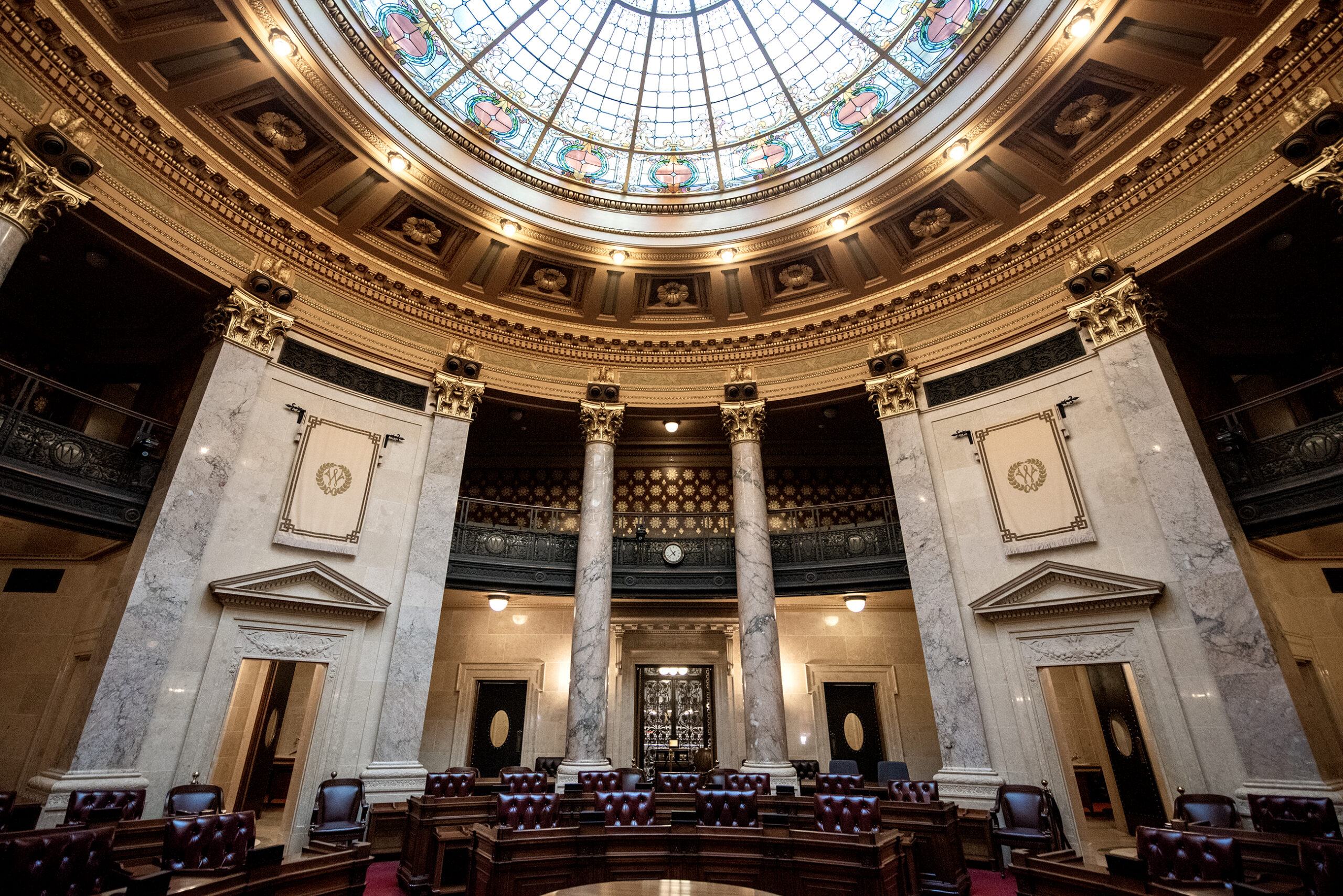
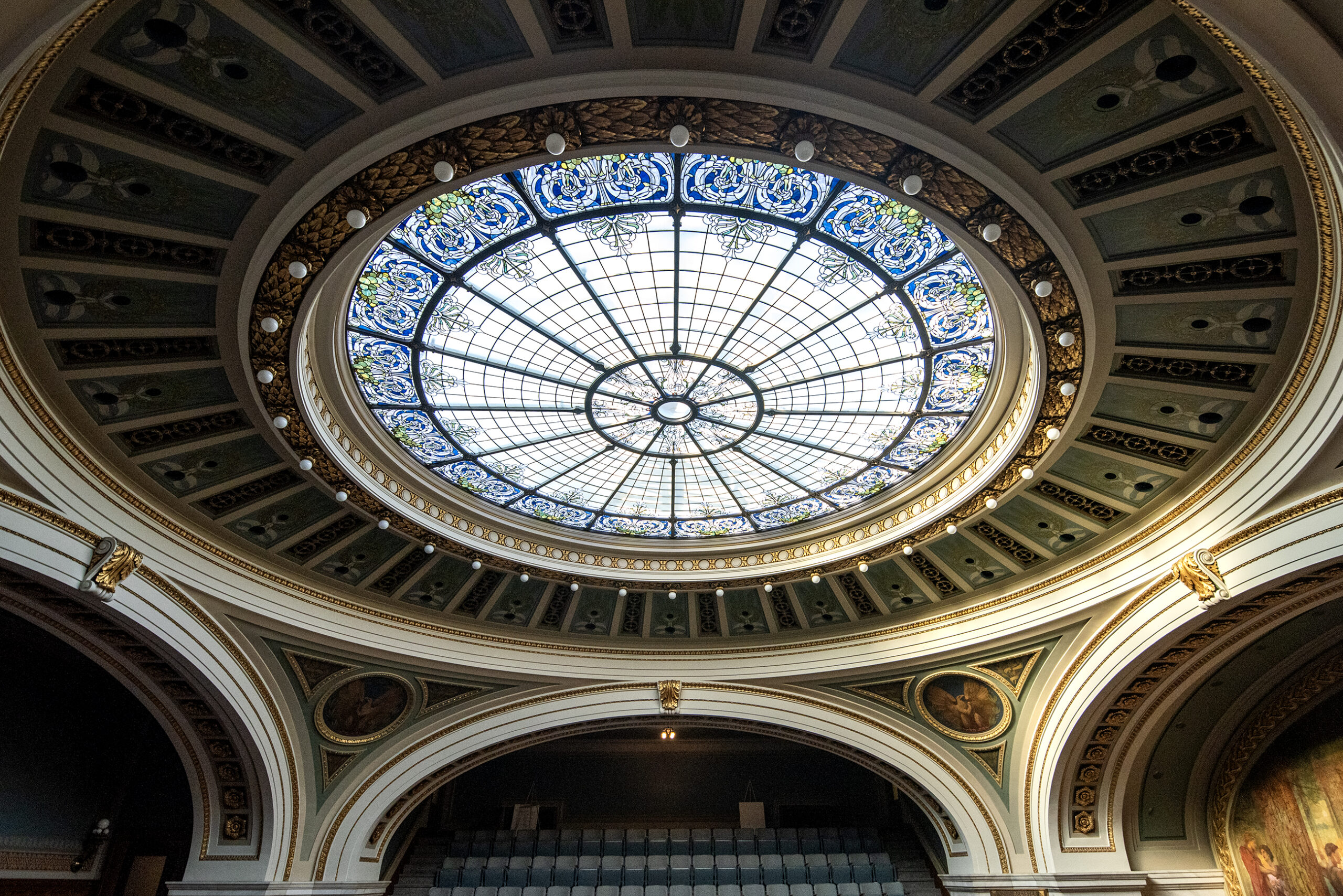
Mike Bath, an engineering specialist, has been working at the Capitol since 1984. Bath was the decorative painter before LaMay. Bath said LaMay has been a godsend and praised his alertness and ability to catch problems quickly.
But LaMay won’t be doing this job forever. He’s 66. Asked how much longer he’d be the Capitol’s decorative painter, he smiled and said that was “up for discussion.”
LaMay said Bath shared invaluable information with him about restoring the building. They both want to make sure the quality is kept up in the years to come.
“I will probably always have something to do with the Capitol because of the years I’ve spent here,” he said. “It’s important to us that this tradition gets passed on to the next decorative painter at the Capitol.”
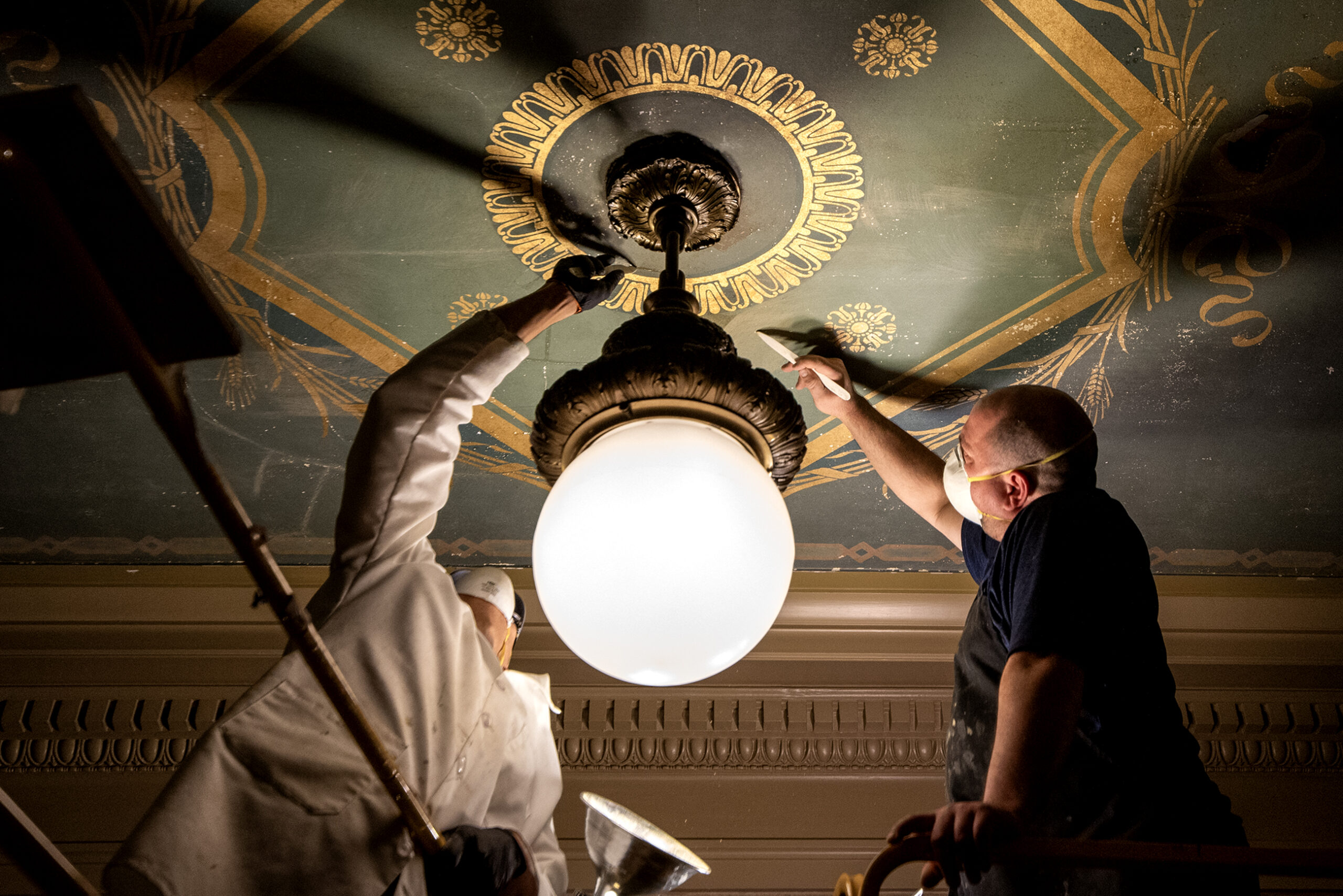
Wisconsin Public Radio, © Copyright 2025, Board of Regents of the University of Wisconsin System and Wisconsin Educational Communications Board.

